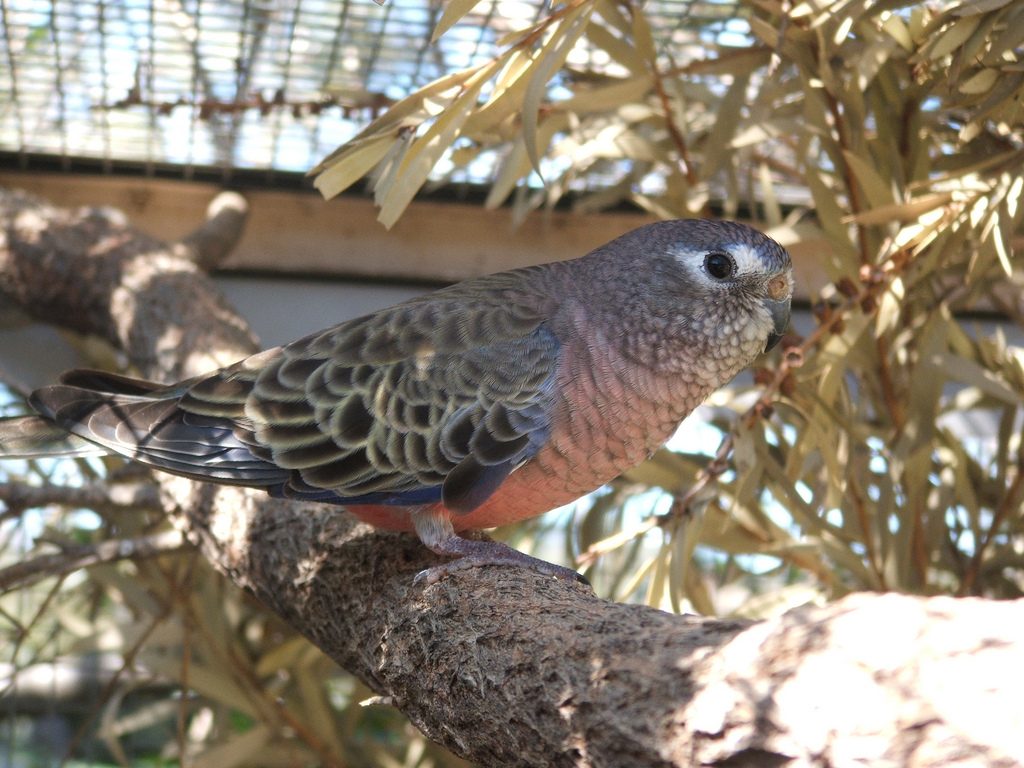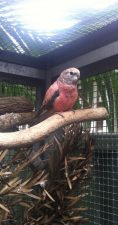The Bourke’s Parrot is a small parrot indigenous to the dry inland areas of Australia. Though their plumage lacks the vibrancy of many of Australia’s other parrot species, they have become immensely popular in aviculture thanks to their low maintenance and gentle nature. Numerous color mutations have been established, most notably the bright pink “rosa” mutation which has considerably improved the popularity of the species.

Diet & Feeding
The basis of the Bourke’s parrot’s diet is a quality small parrot seed mix. It should be stored in an airtight plastic drum to prevent exposure to vermin and moisture. Dry seed mixes are most nutritious when they have been soaked or sprouted.
Green seeding grasses are relished by Bourke’s parrots. Unless the aviary is immensely large and grasses can grow faster than the birds can consume them, it may be necessary to plant seeding grasses into pots which can be rotated out to allow the plant to recover.
Bourke’s parrots should be provided with a wide variety of fruit and vegetables. Green leafy vegetables such as kale, bok choy, and endive are especially important. Apple, pear, corn, carrot and broccoli are readily consumed. As with all birds; Avocado, chocolate, caffeine and alcohol are toxic and should not be fed.
They are known to sometimes consume insects when breeding, especially if housed with other insect-eating bird species from whom they can learn this behavior.
Housing
Bourke’s parrots can be kept in a variety of different aviary types, however as with most birds larger is always better. They enjoy foraging on the ground so traditional aviaries are slightly preferred over suspended flights. The substrate of the aviary should be kept clean and dry to reduce the likelihood that the bird contracts a disease or parasite.
Bourke’s parrots are a placid species and can cohabitate with most finches, quail and some small parrots – particularly those in the neophema genus. They can be housed as a small colony or in single pairs. They are known to become active at night which may disrupt roosting birds with which they share an aviary.
Bourke’s parrots should be provided with an adequate amount of flying space to ensure they receive sufficient exercise. Birds that do not have room to fly may suffer from stress or obesity. A minimum of two meters (6.5ft) of uninterrupted flying space is recommended.
Non-toxic leaves and branches should be provided for chewing. They will be destructive to foliage in a planted aviary.
Breeding
Bourke’s parrots will breed from twelve months of age, but best results are achieved once the birds reach two years of age. The breeding season is from spring through to early summer, though other times of the year are not unheard of.
A medium sized nesting box or hollow log will be used. Bourke’s can produce up to three clutches per year, each containing between 3-6 young. Eggs are incubated for approximately 18 days and fledge the nest at four weeks of age. They become fully independent 3-4 weeks later.
Health
As a grass parrot species, the Bourke’s parrot spends a substantial amount of time foraging at ground level. Keeping the aviary substrate dry and clean (free from faeces) is very important. A strict worming and parasite control regime should be imposed as a preventative measure.
A healthy Bourke’s Parrot has a life expectancy of ten years in captivity. Some sources claim to have observed birds exceeding twenty years of age.

My Bourkes parrot suffers a sought of weakness attack every now and then and is very suspect to cold weather. Would you have any idea what would cause this semi – paralysed attack.
.
I am looking for a new home for our Bourke parrot. Live in the Moreton Bay area. Please contact if interested.
Hi there I’m looking for a normal hen and a pair of green burkes I’m in Queensland
if any bourke parrot breeders are on this thread, I am looking to buy a Rosa Bourke Cock bird which is split to Rubino / Lutino. Or any Cock bird which is split to Rubino / Lutino. Pls contact Dave on 0402 149 245 20/7/23
My Rosa Bourke has been sitting for over three weeks and no eggs have hatched, should I take the eggs out? The male bird is spending all day in the nest with the female, is this unusual?